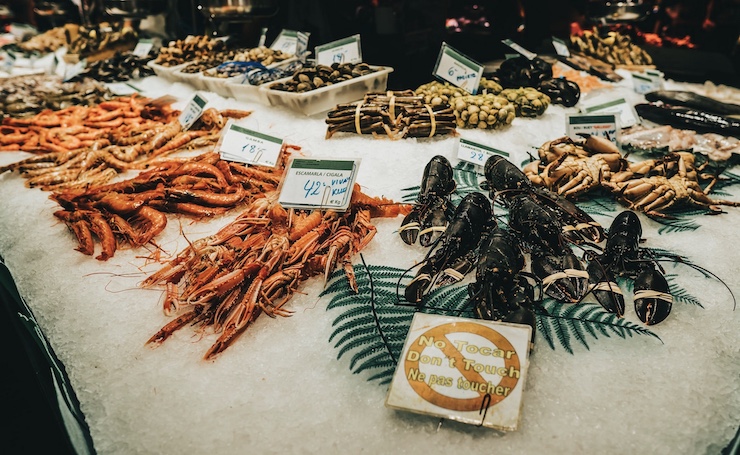
In the United States, the average adult consumes just under 2,000lbs of food in a year. Each year, nearly 7 million tons of animal protein is sourced to feed a population of close to 300 million. The majority of these protein sources come from beef, pork, and then poultry. However, with a 13% increase over the last decade, the fastest growing protein source in the United States comes from aquaculture, the harvesting of seafood. Most seafood sold in stores is farmed rather than wild caught sources. Seafood farms are concentrated outside of the United States leading to a $14 billion deficit. North Carolina State University (NCSU) Assistant Professor Dr. Sierra Young has been tasked with finding ways to ensure better aquaculture in the US. “Federal initiatives are incentivizing the expansion of large-scale nearshore aquaculture systems to meet demand and improve food security and independence,” Dr. Young states, “but without technological intervention, the inevitable growth of the nearshore aquaculture industry is positioned to replicate outdated practices.”
After receiving her Ph.D. in Civil Engineering from the University of Illinois at Urbana-Champaign, she focused on human-robot interaction for physical object manipulation by small unpiloted aerial systems. Dr. Young joined NCSU’s Department of Biological and Agricultural Engineering. At NCSU Dr. Young operates the DAISy (Digital Agroecology and Intelligent Systems) Lab where she and her students explore how robotic sensor systems can better agricultural processes. In November of 2020, Dr. Young received a four year grant from the National Science Foundation to develop a Customizable Fleet of Autonomous Co-Robots for Advancing Aquaculture Production. As expressed in the project’s abstract, “The vision of this project is to improve the efficiency and sustainability of near-shore aquaculture production through integrating a flexible, customizable, multi-task vehicle fleet, consisting primarily of unmanned aerial vehicles (UAVs) and unmanned surface vehicles (USVs), with a biologically-relevant framework for accelerated prototyping.”
One of the biggest hindrances for nearshore fisheries is the time it takes to ensure the waters where harvesting occurs are not polluted. This is of particular concern with the harvesting of mollusks like oysters, clams, and mussels which are natural water filterers. If they are in polluted waters, mollusks absorb the pollutants and clean the water. A great process for naturally decontaminating bodies of water, but not so great for mollusks intended for consumption. Oysters represent the greatest portion of US aquaculture bringing in over $185 million with more than 35 million pounds harvested. Chris Matteo, president of the North Carolina Shellfish Growers Association and owner of Chadwick Creek Oysters, pointed out that the current methods for testing water pollution levels are inadequate.
Large scale storms, like hurricane Dorrian, flood the aquaculture creeks and waterways with polluted runoff from surrounding areas. After these storms, based on assumptions from previous pollution levels, oyster farms get shut down until the water can be tested. As Mr. Matteo explained, this becomes a huge productivity burden on oyster farmers as the farms can be closed anywhere from 50-100 days while waiting to be tested. Using aerial drones and aquatic drones, Dr. Young hopes to speed up the testing process, eventually to the point where fishers like Mr. Matteo will be able to test waters on their own terms with FDA (Food and Drug Administration) compliance.
Dr. Young has compiled a team of robotics, software engineering, and water quality specialists to develop a new way to efficiently test nearshore aquaculture farms. The project will begin by testing small waterways in and around North Carolina’s Outer Banks before moving onto larger coastal regions. The first tool being developed is an unmanned meter-long catamaran vessel to cruise along the water surface. The water drone will be outfitted with sensors that collect data like water temperature, salinity, and oxygen levels. The deck of the vessel will also serve as a landing pad for its accompanying aerial drone. The drone will fly ahead of the vessel to create a map of the area to be tested and warn the vessel of upcoming obstacles like small islands or rocks. Using this information the vessel will be able to autonomously navigate through the waterway, simultaneously communicating the data it collects back to the drone. The aerial drone then sends the data to a ground station to be reported.
North Carolina manages 357 shellfish farms spread over 1,977 acres that are leased to 70 aquaculture farmers like Mr. Matteo. “We have massive amounts of water in eastern North Carolina and limited resources to test the water,” he said. “They have to do something different in order to keep up with the industry. This makes total sense.” As of 2017, the United States was only ranked 17th for aquaculture production while remaining the leading global importer of seafood products. With the drone sensor system proposed by Dr. Young, the United States may be able to reach its goal of tapping into a major revenue source with the efficient, safe harvesting of marine protein sources. As Dr. Young states on the DAISy Lab website, “This proposed research will lower barriers to entry for developing and deploying robotics for mariculture monitoring and will facilitate sustainable management and economic growth in near-shore aquaculture production, which has yet to seize on advances in robotics.”
|